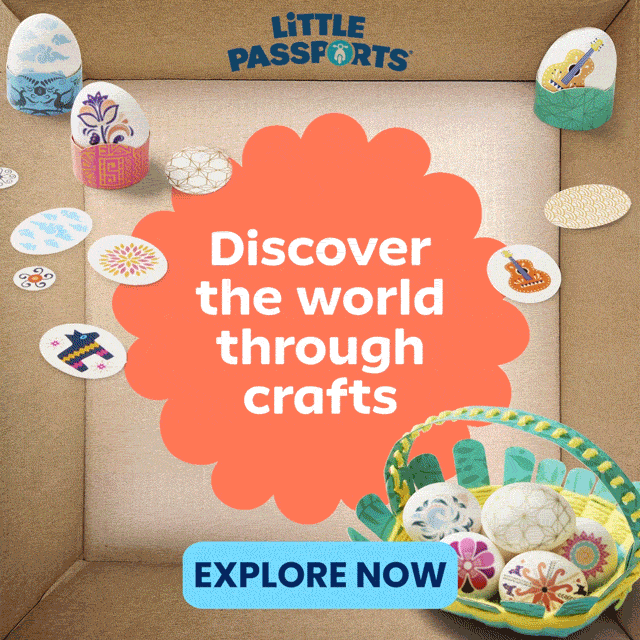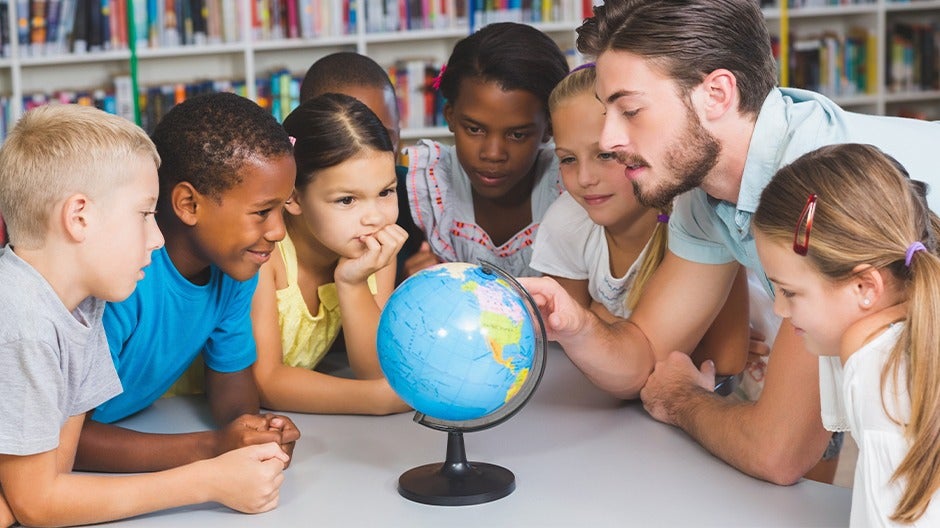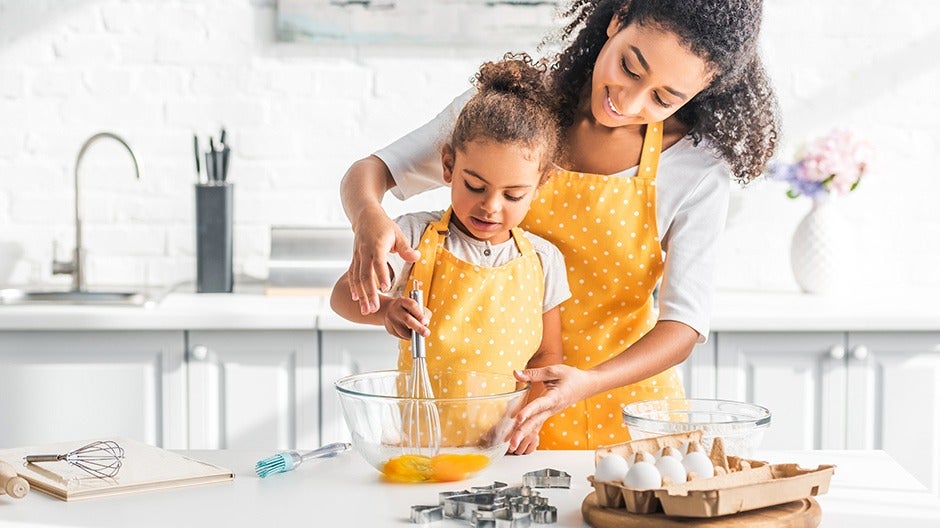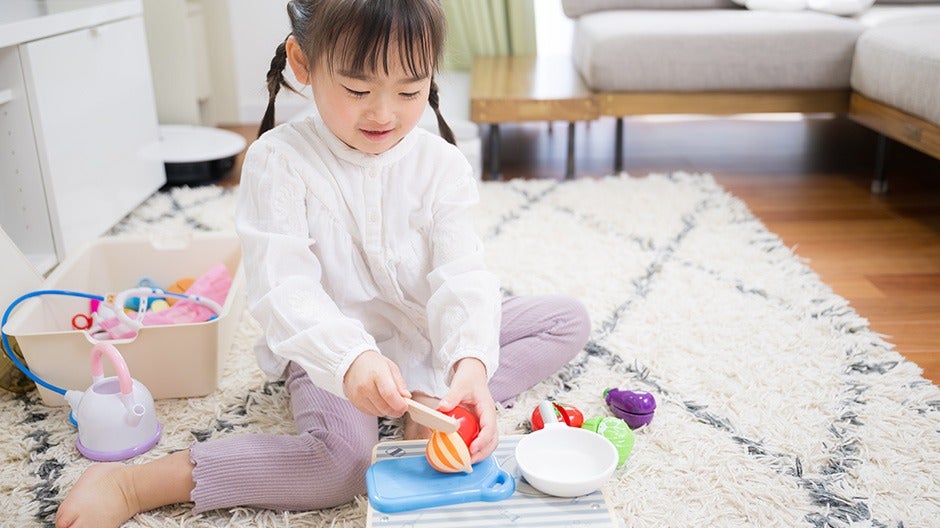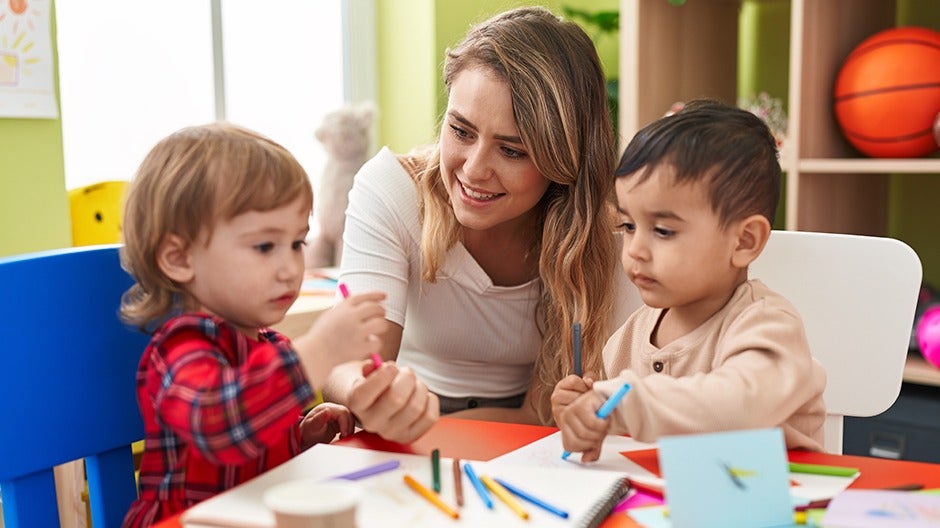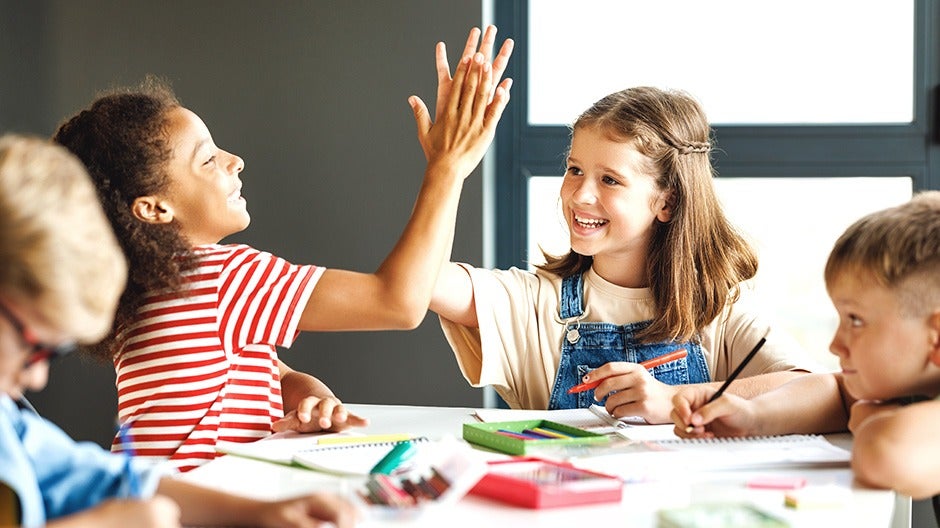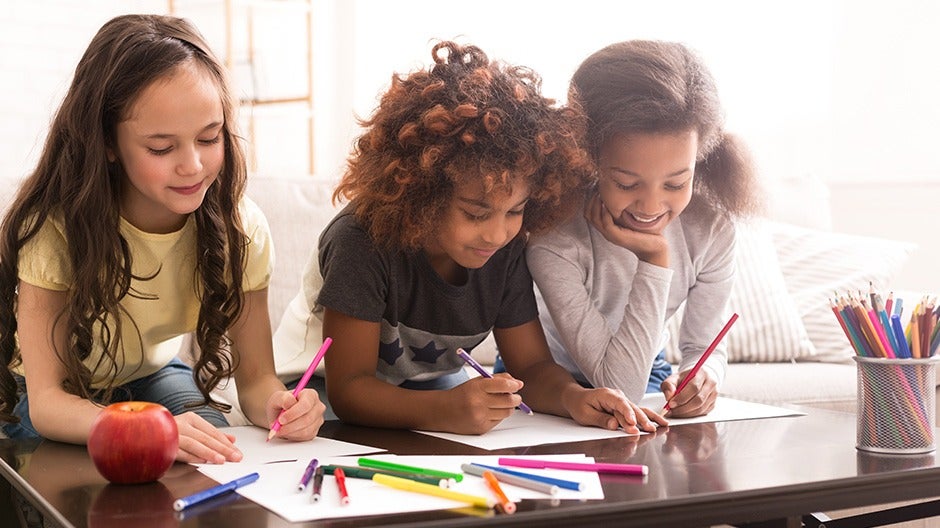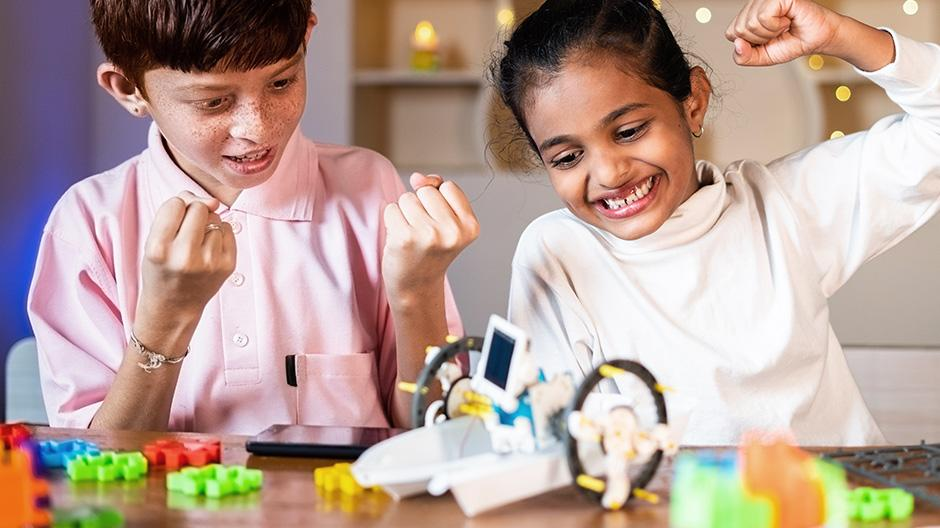Winter means it’s time for snowball fights, sledding, and snowmen! And for the days when there’s nothing to do outside, we’ve got fun and educational indoor winter kids activities that help build Creativity, one of the 5 C’s at the heart of the Begin Approach to helping kids thrive in school and life.
The Short Cut
- Creativity helps kids handle changes, invent new ideas, and solve problems
- Great indoor activities tap into kids’ natural desire to play, which helps them learn and keeps them engaged
- There are lots of fun activities families can do with items they already have around the house, from baking and crafts to obstacle courses and “snowball” fights
If you’ve been struggling to keep your kids entertained while they’re indoors, this article is for you. Keep reading for some inside ideas that are sure to bust boredom and burn off extra energy!
8 Winter Kids Activities to Beat Boredom
1. Have a “Snowball” Fight
If you’re looking for an indoor winter activity that can involve the whole family and burn off extra energy, try an indoor “snowball” fight using paper!
What You Need
- Paper
- Masking tape
- Indoor space big enough to run around in
What to Do
- Find some paper you’re going to recycle and scrunch it up into balls—this is great for building fine motor skills.
- This game is quite active, so clear some space for running around.
- If there are several of you, divide up into two teams and split the play area in half with masking tape. Parents vs. kids is always a great way to go!
- If your kids aren’t ready for rule-based games, have fun throwing paper snowballs at each other and running around the room. If your kids are old enough to understand rules, divide the snowballs up evenly between the teams and set a timer. Whichever team has the least snowballs on their side when the timer goes off wins!
2. Let It Snow!
Using snow and ice to create sensory activities is a fun way to enjoy winter without risking sniffles, especially if you need indoor activities for toddlers.
What You Need
- Snow from outdoors
- Cookie sheet
What to Do
- Take some snow from outdoors and put it on a cookie sheet.
- Let your child play with the snow to engage their sense of touch.
More Ways to Play
- Try snow “painting.” Fill sauce or spray bottles with water and a few drops of food dye, and let your child show off their creativity. Squeezing the bottles or the spray triggers also helps younger kids practice fine motor skills. Just wear a smock or old clothes and lay out plastic to avoid staining.
- Use pipe cleaners, small sticks, buttons, and baby carrots to make mini snowmen. See how creative your kids can get!
3. Go from Winter to Summer with a Story
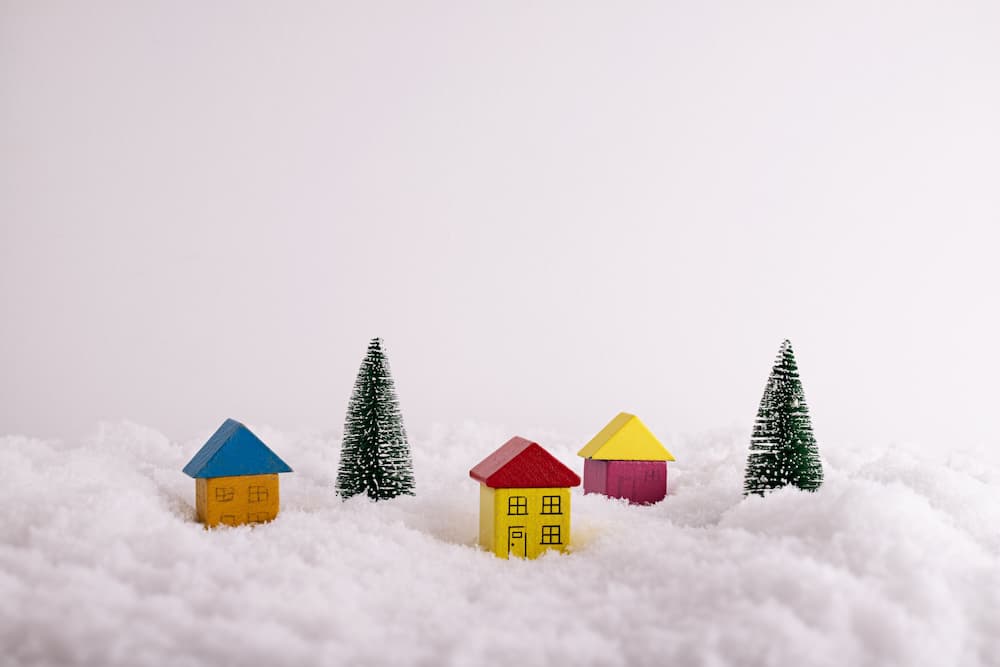
There are many ways to build storytelling skills, but a diorama about winter and summer is a classic way to introduce your child to changing seasons, build fine motor skills, and develop their Creativity.
This activity might take a few days to complete, so it’s great for a weekend when you’re stuck indoors.
What You Need
- Shoeboxes (2)
- Small blocks
- Small toy people and animals
- Cotton balls or cotton fill
- Confectioners’ sugar or flour (optional)
- White cardboard circles
- Toy flowers and greenery
- Washcloths or small towels
What to Do
Make a Winter Wonderland
- Take a shoebox and turn it on its side.
- Gather some small blocks to represent houses and small toy people and animals to act as characters in your winter wonderland.
- Fill the bottom of the shoe box with cotton so it looks like snow.
- Put the block houses and characters into the scene. If you want, sprinkle confectioners’ sugar or flour over the world so it looks like it’s snowing.
- Add a family of snowmen made from white cardboard circles. Once you’re ready, your child can play with their characters to make a fun story!
Switch Over to Summer
- Repeat the steps above to make a second diorama showing a summer scene. Instead of cotton for snow, use flowers and greenery to decorate.
- Add summer activities for your characters and tell a summertime story. For example, you could fold tea towels to make picnic rugs and take your characters on an “outdoor” picnic.
After you make the summer story, compare it to the winter one. How are summer fun and winter fun different? How are they alike?
This kind of conversation encourages kids to compare and contrast, which is a great way to learn new things!
4. Stuffed Toy Sleigh Ride
This imaginative role-play activity builds Creativity and imagination, and it gives kids the chance to be the “adult” taking care of their stuffed toy sledders. It’s a great way to encourage Character (another of the 5 C’s) through taking someone else’s perspective!
What You Need
- Cardboard box
- String
- Markers, pencils, and stickers (optional)
- Pillows, cushions, or cotton balls
What to Do
- Give your child a cardboard box (a shoebox will do nicely) to make their sleigh.
- Put two holes in one side and run a strong string through the holes to make a pull-cord for the sleigh.
- If your child wants to make their sleigh extra special, they can decorate it with drawings or stickers.
- Using things around the house, help your child build a sleigh ride for their toys. You could use pillows or cushions to create a hill, and you could even use cotton balls at the bottom of the hill for the sledders to use as snowballs.
As they take their toys on a sleigh ride, you could sing a song together—“Jingle Bells” is usually a hit!
As your child is taking their toys on their sleigh ride, you can help them think about what their toys might be experiencing.
For example, you could use some towels to make the bottom of the sled soft and to keep the toys warm. If a toy falls out of the sled, you could suggest that it needs to be comforted.
5. Make a Snowman You Can Eat!
This tasty activity builds fine motor skills and imagination and helps your child learn size order and size vocabulary…and did we mention that it’s tasty?
What You Need
- Bowl
- Vanilla ice cream
- Edible decorations (cereal, apple slices, carrots, etc.)
What to Do
- Scoop vanilla ice cream into the bowl (the snowman’s “home”), making three balls: a large one for the bottom, a medium-sized one for the middle, and a small one for the top.
- Decorate the snowman! Cheerios can be eyes, other cereals could be buttons, a small apple slice would make a good mouth, and of course, you can use the traditional carrot nose.
As you make the snowman, use size language like “small,” “smaller,” and “smallest,” or “big,” “bigger,” and “biggest” to help kids learn about size order and expand their size vocabulary.
6. Create a Snow Globe
Snow globes are pretty cool, right? They’re adorable, make a great holiday gift, and have a magical quality that enamors children. If your kids love them, try making your own!
What You Need
- Mason jar with seal (ones for jellies and preserves are ideal)
- Glitter
- Super glue
- Glue gun
- Small plastic figurines
What to Do
- Secure your plastic figurines on the inside of the lid with super glue. Kids can get creative by designing the arrangement, but parents need to do the actual gluing to ensure safety.
- While you’re waiting for the glue to set, fill the jar (almost to the top) with water.
- Add your glitter to the jar and stir.
- Once the super glue sets, run a ring of glue (with your glue gun) around the inside of the lid, and then immediately close the jar and tighten it the best you can. This step is also for parents only.
- Allow the glue to dry.
- Turn the jar upside down, and just like that, you have yourself a snow globe.
7. Bake Together
If there’s one thing most people love about the winter, it’s all the delicious cookies and treats. A warm kitchen permeated with the smell of freshly baked cookies…nothing makes winter more wonderful!
And while baking involves following detailed directions, it also gives kids a chance to get creative with presentation. Grab your favorite sugar cookie recipe, then go wild with icing, sprinkles, and chocolate chips!
Baking can also help your child learn many essential Core Skills (another of the 5 C’s). For example, as you measure they can learn about numbers, just like they would playing preschool math games.
Measurements can be challenging for children to grasp. You can help them learn these concepts by using relevant language while baking:
I’m going to add a dash of salt because I don’t want too much.
Let’s grab that cup to help us measure the flour.
We need half a teaspoon of salt.
In addition, children can learn some letters of the alphabet or numbers with the aid of cutters. Once you’ve rolled out your dough, encourage them to create specific cutouts:
Let’s see if we can create cookies that spell out your name.
How about we cut cookie shapes from one to five?
8. Indoor Obstacle Course
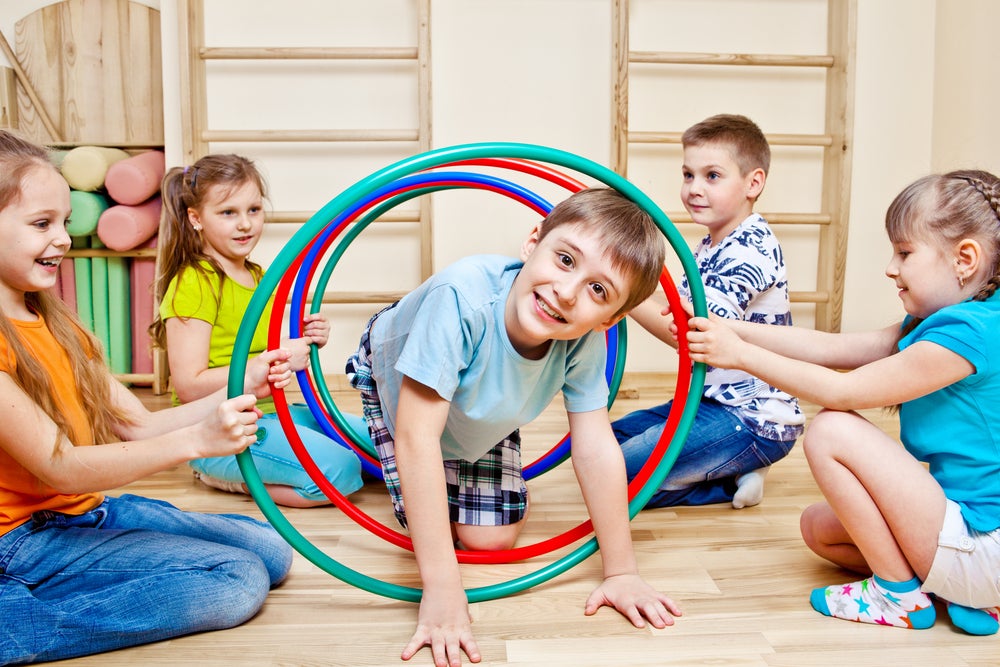
Obstacle courses are a unique physical activity that encourage problem-solving, Creativity, and, of course, lots of fun.
To create your own, look at the everyday items you already have around the house and build the course around them.
For example, if you have painter’s tape, place a long strip on the floor and in a matter of seconds, you have a balance beam. You can also line up books on the floor and create a maze.
You can even place some dining room chairs a few feet apart, and your child can go over and under them to reach the other side. Almost any movable item around the house can be added to the obstacle course.
When kids are having lots of fun, safety is often the last thing on their minds. As a parent, your primary role will be to ensure that no one gets hurt. This might mean adding a few blankets, pillows, or cushions in strategic places.
When you plan the obstacle course with your child, get them excited by encouraging them to see the items from another perspective.
We’ll place this blanket here, and this will be our lake. You’ll need to “swim” across this lake and make it to the other side. We need to create a long tunnel. Do you think the chairs or the table can help with that?
This is a great activity to get the whole family involved. And for a more challenging game, you can even time everyone to see who can get through the course the fastest!
Tips to Create Your Own Indoor Winter Activity for Kids
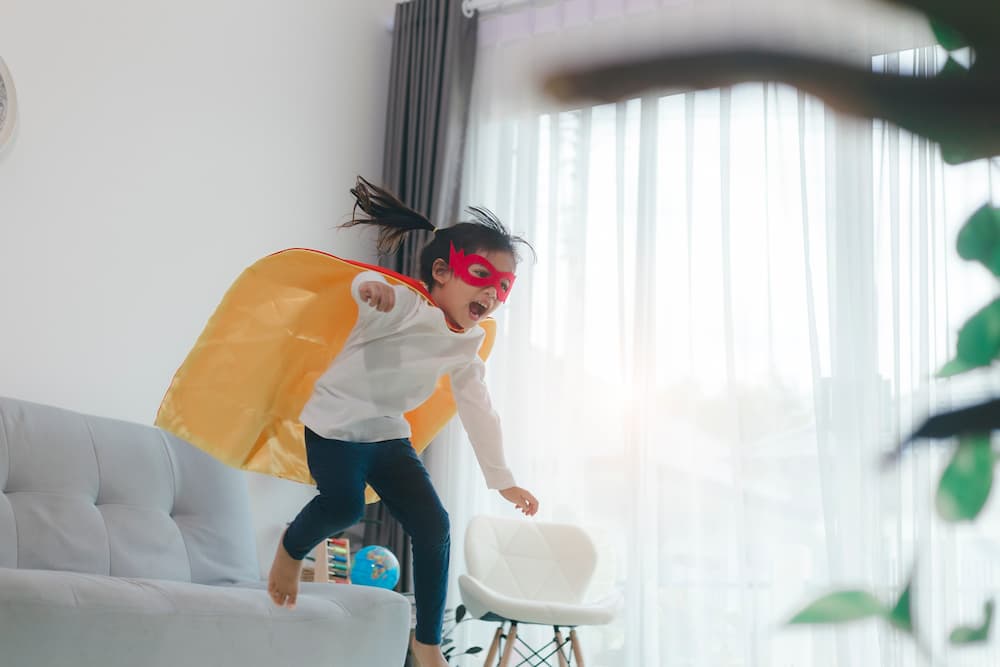
Winter is long, and you might run through all these activities well before it’s over. If you’re ready to create your own winter activities, keep the following tips in mind:
1. Use Available Resources
Planning exciting winter kids activities doesn’t have to mean going to the store and picking up special materials. You can do plenty with the resources you already have in and around your home.
Be creative! Use old dishes to set up a pretend restaurant. Make a bin of old clothing that your children can turn into interesting costumes. When you model using things in many different ways, you help kids learn to do the same.
2. Work in Fun Learning
Games and activities for kids are a great opportunity for learning. And while that can look like games that teach writing or math, it doesn’t have to! Kids learn a ton from getting creative and engaging in open-ended play, or from make-believe play.
But where do you start? Research shows that children learn best when they participate in activities that are fun and relevant to their interests, lives, and experiences. So always keep this in mind when choosing activities for your kids.
Get Creative with Begin!
At Begin, we know winter is a great time for kids to get creative indoors, and we build lots of opportunities for it into our award-winning learning products. Whether kids are making stories and digital art in HOMER, exploring the world through hands-on crafts with Little Passports, or creating their own video game levels in codeSpark, we’ve got your family covered.
Check out our Early Learner Program to see how our products can come together to help develop all 5 C’s.


